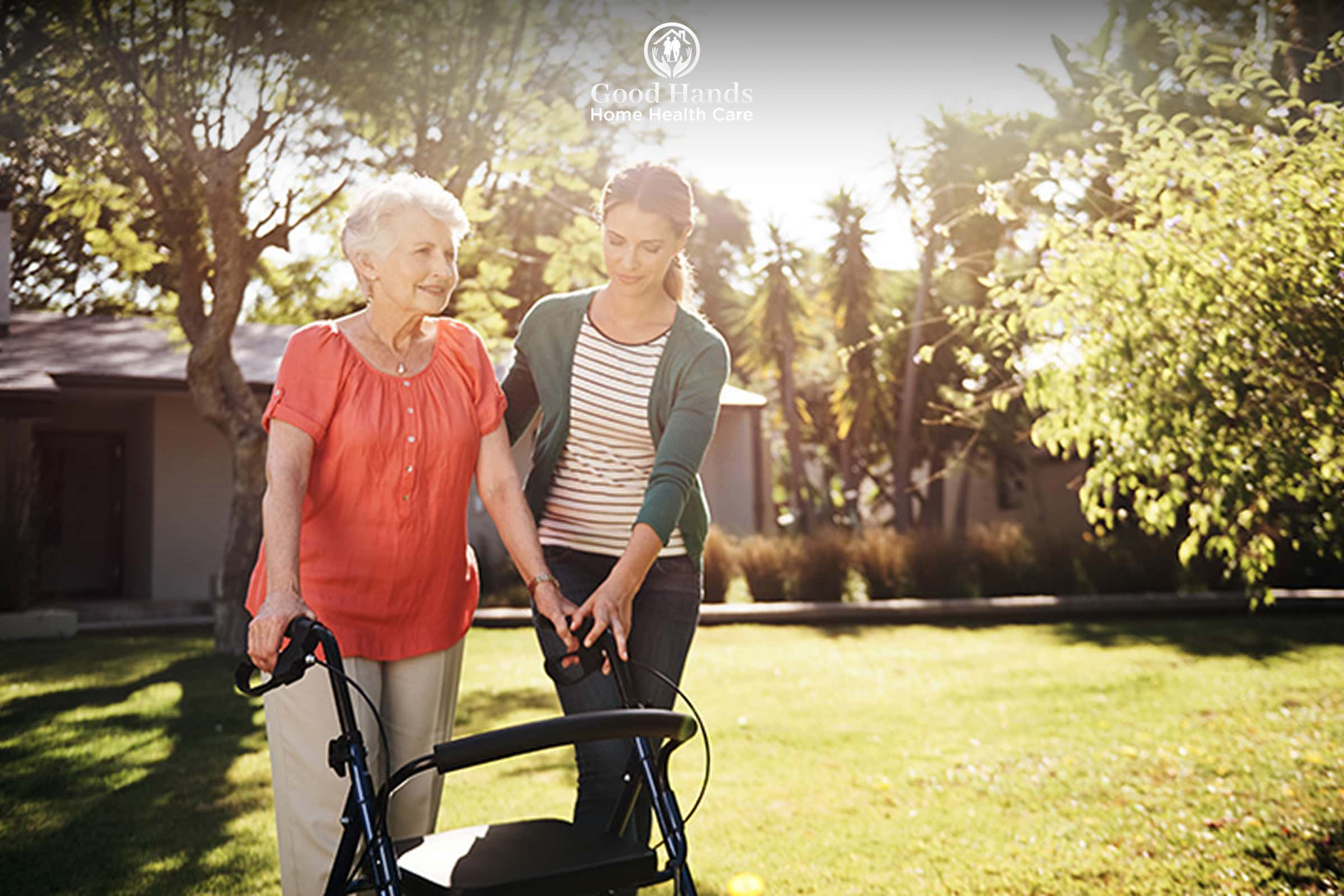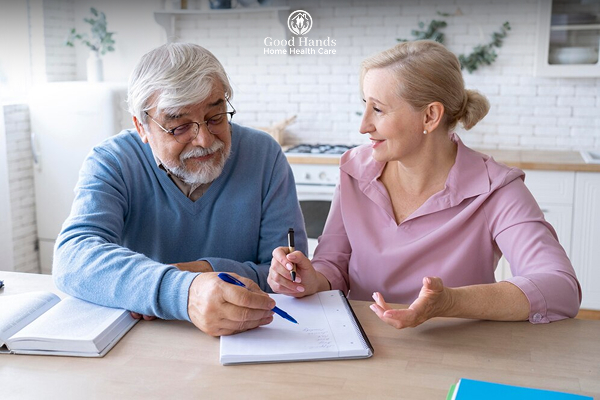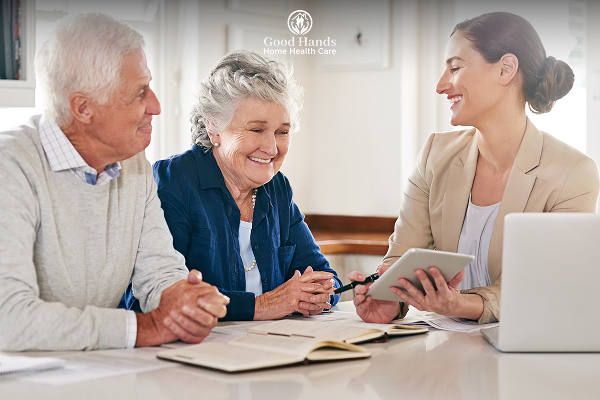Blog

Prevent Falls: Balance Tips for Seniors

Prevent Falls: Balance Tips for Seniors
Mastering stability techniques becomes increasingly vital as we journey through our golden years. Here at Good Hands Home Health Care, we recognize the critical importance of maintaining your footing beyond your sixth decade. Explore actionable techniques, beneficial physical activities, and professional guidance to bolster your stability, enhance self-assurance, and traverse your everyday routines with security and self-sufficiency.
Why Fall Prevention Is So Important for Seniors
Falling incidents constitute the primary source of injuries among individuals over 60, potentially resulting in life-altering consequences for wellness and autonomy. The encouraging reality? With appropriate knowledge and preventative strategies, most incidents can be avoided.
Recognizing vulnerability factors serves as the foundation for effective fall prevention tips elderly patients should implement. These encompass diminished muscle strength, medication-induced side effects, deteriorating eyesight, and household hazards. The repercussions of tumbling can be substantial—ranging from bone fractures and prolonged hospitalization to developing mobility anxiety that further restricts activity and self-reliance. Implementing measures to avoid falls after 60 transcends mere safety concerns—it’s fundamentally about sustaining your lifestyle quality and safeguarding your independence.
Essential Balance Exercises for Seniors
Consistent stability conditioning establishes groundwork for enhanced posture and renewed movement confidence. Integrating these balance exercises for seniors into your daily regimen, even for just minutes each day, can dramatically decrease your accident vulnerability.
Beneficial Activities:
- Single-leg elevations strengthen hip musculature while boosting unilateral stability.
- Tandem walking enhances coordination and walking steadiness.
- Tai Chi sequences merge gentle movements with mental focus for comprehensive body equilibrium.
- Chair-supported yoga delivers propped positions to develop strength without risk.
- Seated equilibrium training provides alternatives for mobility-challenged individuals.
These physical routines needn’t be intricate to yield results. Even straightforward activities like practicing single-leg standing while holding a kitchen counter or concentrating on proper alignment during walks can yield significant benefits. At Good Hands Home Health Care, we prioritize strength and balance seniors can cultivate through regular, suitable physical training tailored to individual capabilities and requirements.
Strengthening the Body to Prevent Falls
Developing robust foundations in your lower extremities and core musculature is fundamental for maintaining equilibrium and preventing mishaps. When the muscles supporting your pelvic region, legs, and midsection are properly conditioned, they respond more effectively to challenges and help maintain proper alignment.
Concentrate on gentle movements that mature adults can execute safely—modified chair-assisted squats, countertop calf raises, and seated abdominal exercises. Elastic resistance bands provide low-impact muscle development without stressing joints. Everyday activities create opportunities to improve coordination seniors require: attempt single-leg balancing while teeth-brushing, lateral stepping while waiting for kitchen appliances, or heel elevations during household chores.
Improving Coordination and Reflexes
Robust coordination capabilities help your physique respond effectively to unexpected movements, irregular surfaces, or momentary imbalances that might otherwise result in accidents. Training your neurological-physical connection becomes increasingly crucial as reflexes naturally diminish with advancing years.
Uncomplicated activities can markedly enhance your body’s response mechanisms. Experiment with seated object-tossing, navigating floor markers, or following chair-based rhythmic movements. Dual-cognitive training—walking while listing categories or counting in reverse—conditions your brain to manage multiple inputs simultaneously, mirroring real-world scenarios. Just brief daily practice reinforces neural pathways, helping your physique react more efficiently when challenged. The capacity to improve coordination seniors develop through these exercises significantly contributes to accident prevention.
Make the Home Safer for Seniors
The well-known comfort of one’s residence can paradoxically harbor the greatest hazards for mature individuals. Most incidents occur in spaces we consider safest, but thoughtful adaptations can significantly reduce these risks while preserving a comfortable living environment.
Essential Residential Safety Modifications:
- Eliminate area rugs, secure power cords, and keep pathways obstacle-free.
- Implement bright, reachable illumination with dual-location switches in corridors and stairways.
- Position nightlights in bathrooms, hallways and bedrooms to prevent nocturnal missteps.
- Install support handles near toilets, bathing areas, and along staircases for additional stability.
- Utilize slip-resistant surfaces in bathrooms and other potentially treacherous zones.
- Reorganize frequently-accessed items to minimize reaching or bending.
Implementing home safety for older adults doesn’t necessarily demand major structural changes. Frequently, minor adjustments create the most significant impact in preventing incidents. Additionally, wearing supportive, correctly sized footwear indoors rather than loose house slippers, and promptly addressing maintenance issues before they create hazards are essential preventative protocols for the elderly population.
Building Confidence to Stay Active and Independent
The psychological impact of falling anxiety can be as restrictive as physical limitations. Many seniors develop apprehension that results in decreased mobility, which ironically heightens vulnerability by contributing to muscular deterioration and diminished coordination.
Breaking this pattern requires cultivating self-assurance alongside physical capabilities. Consider participating in neighborhood classes or consulting with a physical therapy specialist who focuses on prevention strategies for individuals beyond 60. These supervised environments provide security and community support while developing strength and balance seniors require. Monitoring improvements helps sustain motivation—noting duration of single-leg standing or walking without pauses demonstrates your advancement. Sustaining social connections is essential, as isolation contributes to physical decline and fear-based restrictions.
Final Thoughts on Preventing Falls After 60
Embracing a proactive approach to mobility enables mature adults to preserve independence and life quality for extended periods. Rather than viewing prevention as a constraint, consider it an investment in your continued freedom and pursuits.
The most effective methodologies emphasize consistency over intensity. Five minutes of daily practice yields superior outcomes compared to occasional extended sessions. Building physical resilience doesn’t require sophisticated equipment—just regular attention. Incremental improvements accumulate progressively, substantially enhancing stability and confidence. Combining physical preparedness with environmental awareness helps avoid falls after 60 while maintaining an engaged lifestyle. Proper fall prevention tips elderly individuals can incorporate daily significantly impact their continued independence.
Take the First Step Toward Fall Prevention Today
Reach out to our compassionate specialists for an individualized risk evaluation and learn how our expert guidance can assist you in maintaining stability, confidence, and self-sufficiency at home. Contact us today!









